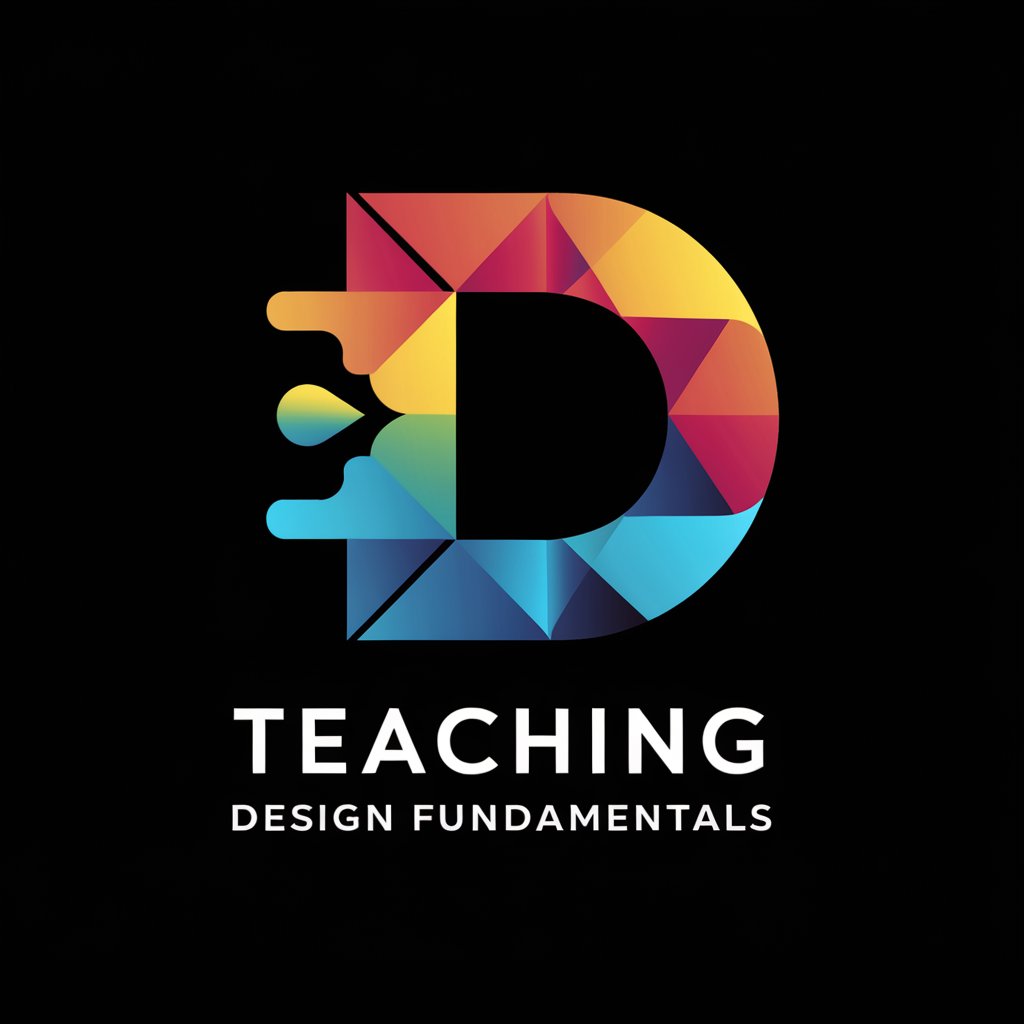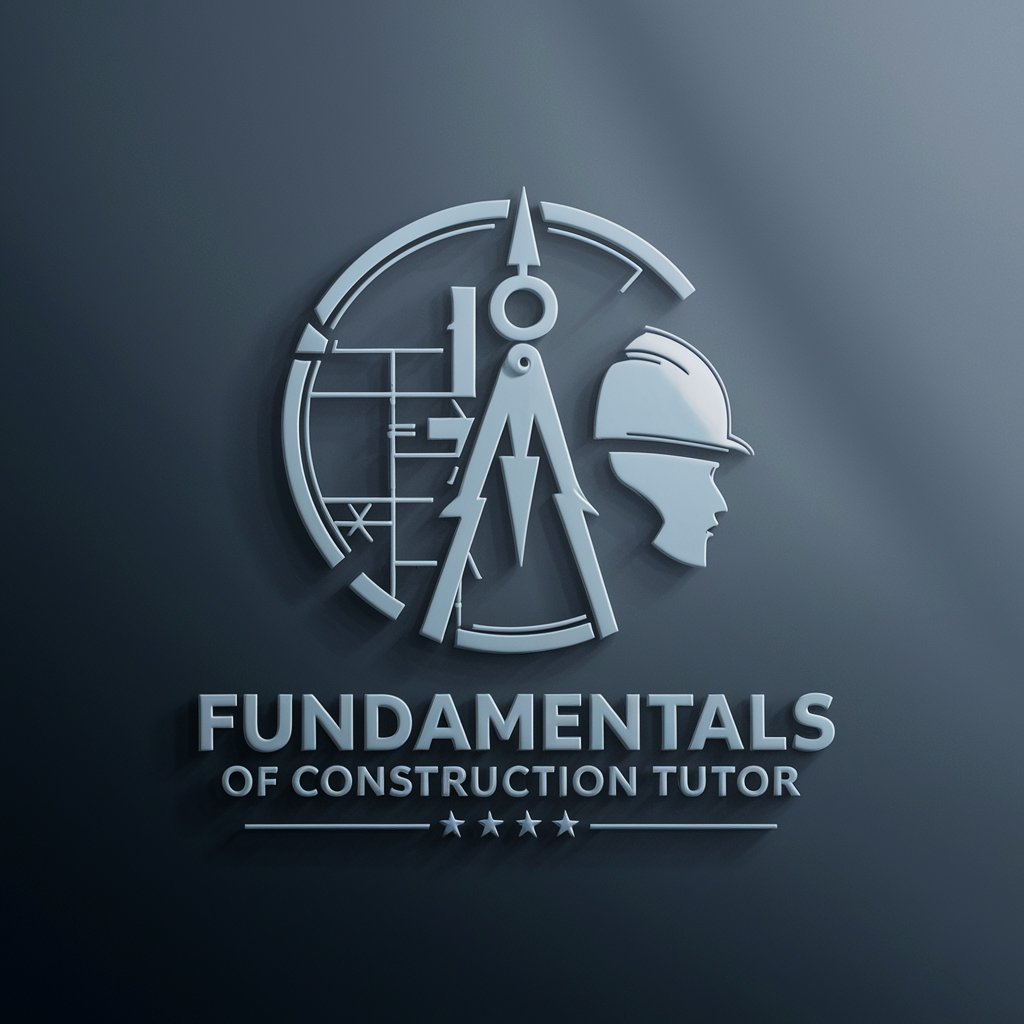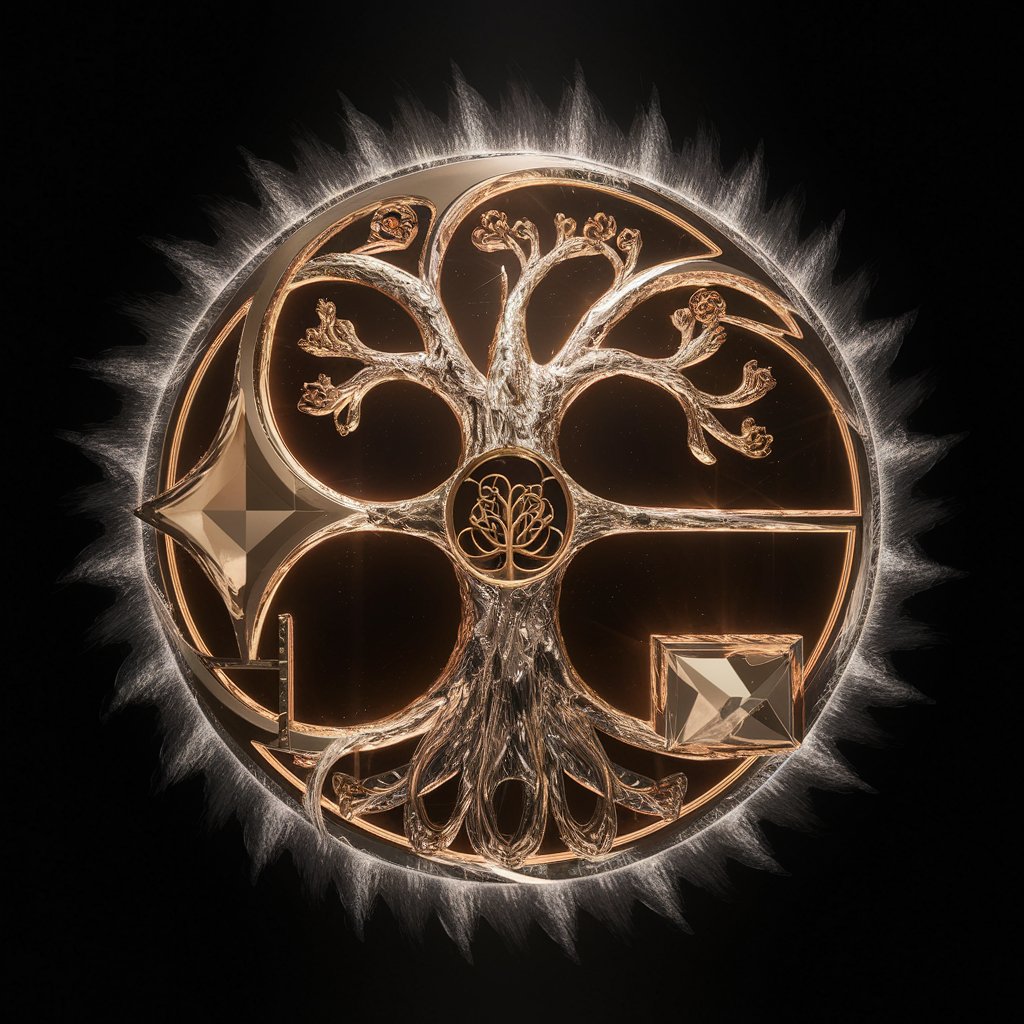Design Fundamentals - design principle exploration

Welcome to the world of creative design!
Empowering creativity with AI-driven design insights.
Describe a design concept that uses geometric shapes and vibrant colors to create a sense of movement.
How would you explain the importance of color theory in visual design?
What are some effective methods for teaching design principles to beginners?
Can you describe a project that combines traditional design techniques with modern technology?
Get Embed Code
Understanding Design Fundamentals
Design Fundamentals serve as the foundational layer for engaging with the vast world of design, encompassing the essential principles, practices, and theories that guide effective visual communication and product creation. This encompasses a broad range of disciplines including graphic design, product design, interior design, and more. For example, understanding the balance, contrast, alignment, and repetition can significantly enhance the visual appeal and functionality of a website or a physical product. Similarly, grasping the principles of color theory can inform the creation of more engaging and effective branding materials. Powered by ChatGPT-4o。

Core Functions of Design Fundamentals
Principles of Visual Design
Example
Teaching the basics of line, shape, color, texture, and space.
Scenario
A graphic designer uses these principles to create a visually compelling layout for a magazine spread, ensuring that the elements on the page guide the reader's eye and convey the desired mood.
User-Centered Design
Example
Focusing on the needs and wants of the user to guide the design process.
Scenario
A product designer applies user-centered design techniques to develop a new ergonomic chair, conducting user research to understand pain points with current office chairs and iterating on the design based on feedback.
Design Thinking
Example
Applying a methodical approach to problem-solving that involves empathy, ideation, prototyping, and testing.
Scenario
A team of designers uses the design thinking process to tackle the challenge of improving the user experience of a mobile app, resulting in a more intuitive and satisfying interface for users.
Sustainable Design
Example
Incorporating practices that reduce negative impacts on the environment.
Scenario
An interior designer selects materials and products that are sustainable and eco-friendly for a new green building project, ensuring that the space is not only aesthetically pleasing but also environmentally responsible.
Ideal Users of Design Fundamentals Services
Students and Educators
Individuals in educational settings can benefit from a deep dive into design fundamentals to build a solid foundation in design principles, history, and methodologies. This knowledge is crucial for students pursuing careers in various design fields and for educators teaching these concepts.
Professional Designers
Design professionals across disciplines (graphic, industrial, fashion, etc.) can utilize design fundamentals to refine their skills, stay updated on best practices, and apply principles more effectively in their work, leading to higher-quality outcomes and innovative solutions.
Businesses and Entrepreneurs
Companies looking to develop products, services, or branding can benefit from an understanding of design fundamentals to enhance user experience, marketability, and aesthetic appeal, ultimately contributing to the success and differentiation of their offerings in the market.
Hobbyists and DIY Enthusiasts
Individuals engaging in personal projects related to crafts, home decor, or digital creations can apply design fundamentals to improve their work's visual impact and functionality, making their projects more satisfying and professional.

How to Use Design Fundamentals
1
Begin by visiting yeschat.ai for a complimentary trial, accessible immediately without the necessity for login or subscription to ChatGPT Plus.
2
Explore the foundational concepts of design by navigating through the tutorials section, where key principles such as color theory, typography, and layout are explained in detail.
3
Engage with interactive exercises designed to solidify your understanding of design fundamentals, applying concepts in real-time to see immediate effects.
4
Utilize the tool’s feedback system to refine your design projects, benefiting from AI-driven suggestions for improvement.
5
Stay updated with the latest design trends and techniques through the tool’s resources section, ensuring your skills remain sharp and relevant.
Try other advanced and practical GPTs
UI/UX Design Fundamentals
Master UI/UX Design with AI Guidance

Food Photography Fundamentals
Empower Your Culinary Creativity with AI

Fundamentals of Audit GPT
Decoding Auditing with AI

Database Fundamentals Tutor
Harness AI to Master Database Fundamentals

Fundamentals of Construction Tutor
Empowering Construction Knowledge with AI

Computer Science Fundamentals Tutor
Empower your coding journey with AI

Professor Diffuse
Master Diffusion Models with AI

Stable Diffuser
Crafting Visuals with AI Precision

Illusion Diffuser GPT
Crafting Reality with AI

Diffuser Blend Wizard
Tailored Aromatherapy, Powered by AI

FBMP Listing Assistant
Revolutionizing Marketplace Listings with AI

Seon - LISTING
Elevate Your Listings with AI-Powered SEO

Frequently Asked Questions about Design Fundamentals
What exactly are Design Fundamentals?
Design Fundamentals encompass the essential principles and practices that form the backbone of effective visual design. This includes understanding color theory, typography, composition, and user interface design, among others.
Can Design Fundamentals be applied to digital and print media alike?
Absolutely. The core principles of Design Fundamentals are applicable across various mediums, including digital interfaces, print materials, and even three-dimensional spaces.
How does understanding Design Fundamentals improve my creative work?
Grasping these fundamentals empowers you to create more cohesive, effective, and visually appealing designs. It forms a base upon which creativity can flourish, allowing for more intentional design choices.
Are there any prerequisites for learning Design Fundamentals?
No specific prerequisites are needed. A keen interest in design and a willingness to explore and experiment with visual concepts are all you need to begin.
How does the tool stay updated with the latest design trends?
The tool incorporates AI to analyze current design trends and updates its resources accordingly. This ensures users have access to the most recent design techniques and insights.
